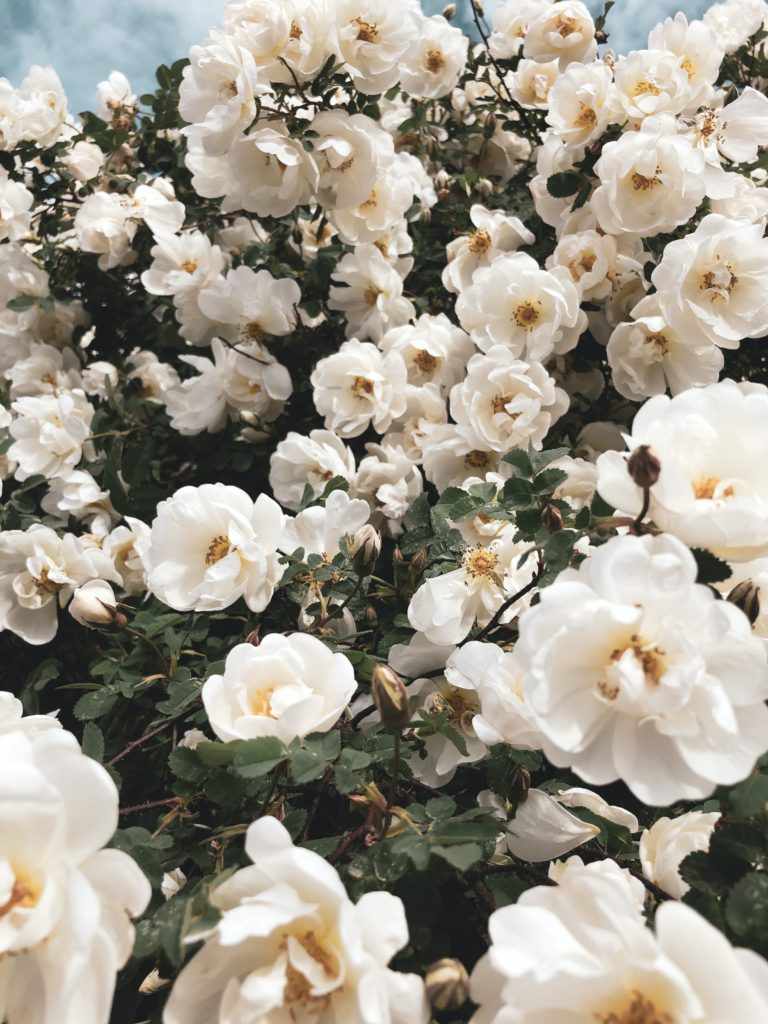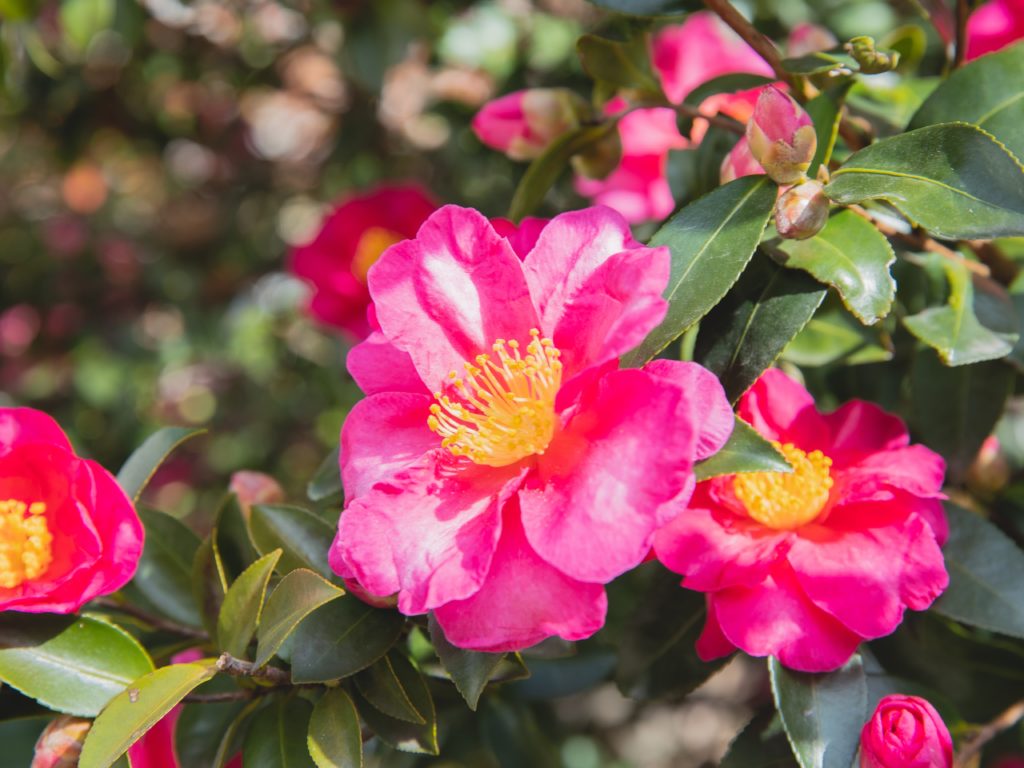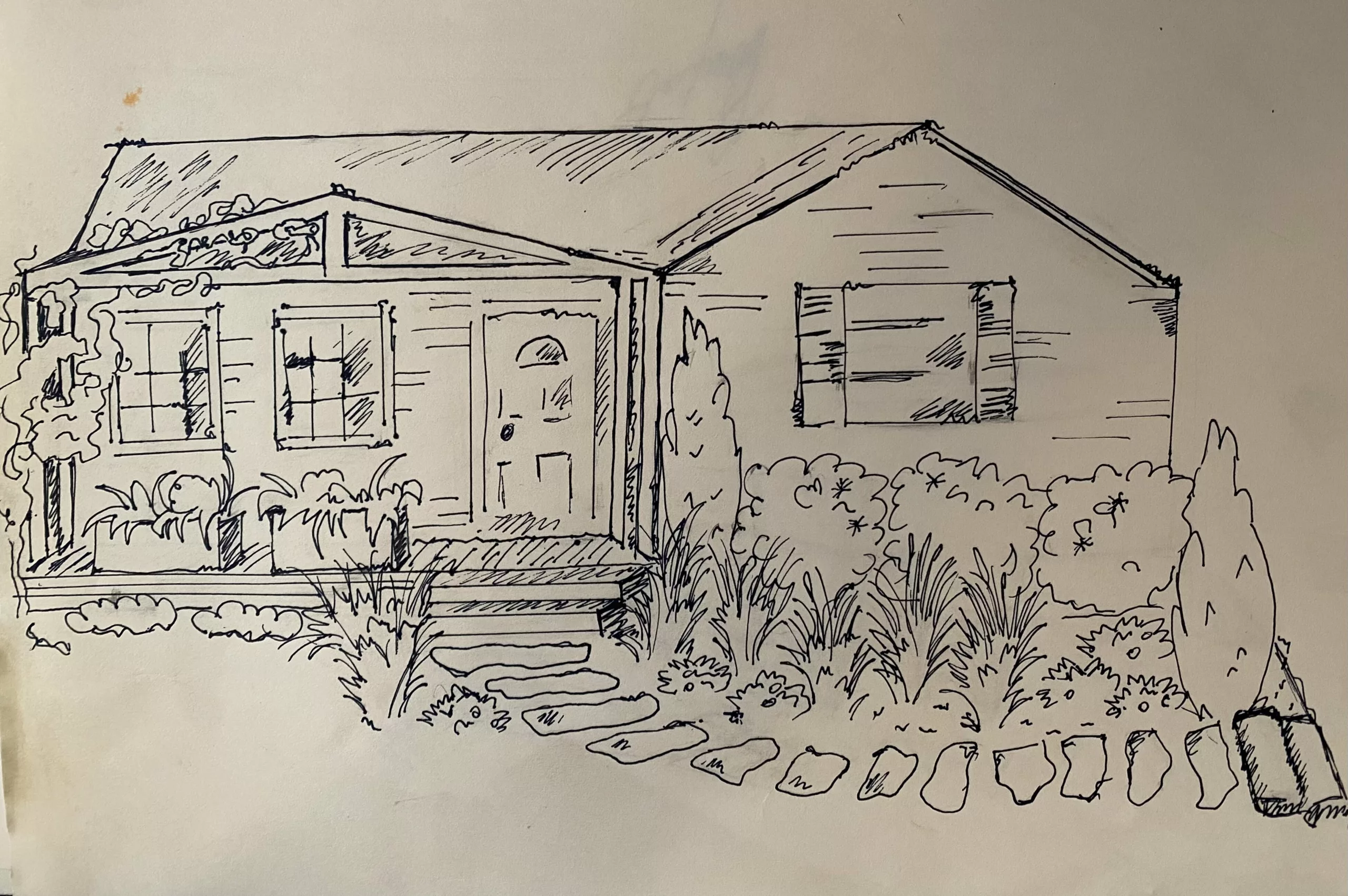
Introduction
Camellias are a Southern garden staple. Known for their luscious foliage and various flowers, these precious perennials make a lovely addition to any landscape. In fact, Camellias come in so many shapes and sizes, the hardest part of planting them is deciding which variety to choose!
While the best variety is totally up to you, there are a few factors that can help you decide which camellia will be easiest to grow in your garden. Let’s take a look at the needs, varieties, and growing preferences of different camellias to see which one fits your needs!

Types of Camellias
Camellias make up a huge plant genus, hosting over 250 species of plants! However, there are four main varieties we are referring to when we think of camellias.
The first is Camellia japonica, or Japanese camellias. These shrubs originated in– you guessed it– Japan. With over 3,000 cultivars of this species, it’s no wonder most of our garden variety camellias are japonicas.
Most Japonica varieties have red flowers with various forms. These shrubs do best in partial to dappled sunlight, and typically prefer slightly acidic soils. C. japonica thrive in zones 7-9 (though some may be cold hardy to zone 6).
Camellia sasanquas make up the second largest group of garden camellias, and these are by far the most popular in the American southeast. Favored for their shrubby form and tolerance of direct sunlight, these camellias are tolerant in zones 7-10.
The flowers of C. sasanquas are distinct due to their single-flowering form. Many of these varieties open to expose the golden-yellow stamens of the flower– not just petals.
The final camellia I’ll mention is Camellia sinensis. This variety may be less common than its showy cousins, but it’s worth mentioning because of the special product it makes– tea!
Chinese camellias are grown around the world for their leaves, which can be processed to produce green, black, white, and oolong teas.
How Fast Do Camellias Grow?
Camellias are considered moderately fast growing shrubs. On average, they may grow between 10-12 inches in a year, provided the conditions are right.
However, not all camellias grow equally. Sasanqua varieties are known to grow somewhat faster than the Japanese varieties. For any camellia, their cultural environment will greatly impact how well they grow.
Camellias hate wet feet, and will grow easiest if they’re provided with loose, well-draining soil. Another affecting factor is sun exposure. All camellias prefer partial sun to dappled sunlight, though some varieties can tolerate full sun. They will grow best and easiest somewhere sheltered from strong winds, direct sunlight, and dramatic temperature changes.
Make sure newly planted camellias receive ample water, and don’t have to compete with nearby plants for water. Like most plants, getting established has a big impact on how well your camellias will do. When planted in a proper location with plenty of water, camellias will grow and live for a long time!
One final consideration for helping our camellias grow is fertilization. For these shrubs, more is not better. It’s recommended that if you fertilize your plants, do so no more than three times per year. Carefully follow the instructions on your fertilizer label to avoid burning the leaves or trunk of your plant.
When Do Camellias Bloom?
Different varieties and cultivars of camellias will bloom at different times, but generally speaking these are fall to spring flowering shrubs. They add a pop of color to your landscape during cold, winter months!
It’s worth mentioning here that camellia blooms come in six different petal formations! (Just when you thought they couldn’t get more diverse!!)
Single: These blooms have one ring of petals, and the stamens are exposed
Double: Two (or more) rings of petals. Still, the stamens are visible
Formal Double: Multiple rings of petals that hide the stamens
Rose Form Double: Multiple rings of petals that will only expose stamens once fully opened.
Anemone: One (or more) rings of large, outer petals
Peony: These blooms may have irregular shape petals, but maintain a very rounded shape
Best Camellia Varieties
Now that you’re an expert on all things camellia, let us show you our five FAVORITE camellia varieties to grow in your garden!
‘Yuletide’ C. Sasanqua
This single-blooming shrub makes a great addition to any winter landscape! The bright red flowers, with showy golden stamens, bloom from November through January, bringing a pop of color to the holiday season.
Known for it’s prolific blooming, this shrub will grow 8-10’ high, and is hardy in zones 7-10.

‘Jordan’s Pride’ aka ‘Herme’ C. japonica
One of my all-time favorites! This camellia features a variegated pink and white double bloom, with visible yellow stamens once the flower is fully open.
This variety can grow 8-12’ tall, and can easily be pruned into a tree-form camellia. Hardy in zones 7-9, this lovely shrub blooms from January through March.
‘Debutante’ C. japonica
With it’s quintessential peony flowers, this camellia is one of the longest blooming varieties, providing flowers from October through May! Though hardy in zones 8-10, ‘Debutante’ can survive in zone 7 with proper protection.
These shrubs produce showy pink flowers, and can tolerate more direct sun than other varieties. With proper cultural conditions, it can grow 8-12’ tall!
‘High Fragrance’ C. japonica
You may have guessed it by the name, but this variety of camellia smells truly delightful! Hailed as a cross between jasmine and rose, this fragrant variety is perfect for sensory gardens.
Hardy from Zones 7-10, ‘High Fragrance’ is more compact than some of its cousins, reaching only 4-6’ at maturity. Double-peony flowers bloom from February through May.

‘Snow on the Mountain’ ‘White Doves’ ‘Mine No Yuki’ C. sasanqua
Known by many common names, this white camellia produces hundreds of double white blooms during its flowering season.
‘Snow on the Mountain’ flowers fall through winter, and is hardy in zones 7-9. At maturity, this shrub reaches 6-8 feet.
Conclusion
While camellias are a relatively easy plant to grow, knowing the right conditions is essential to keeping them happy and healthy. And with so much color and variety to choose from, it’s totally worth prepping a little space to plant these big-impact flowers.














